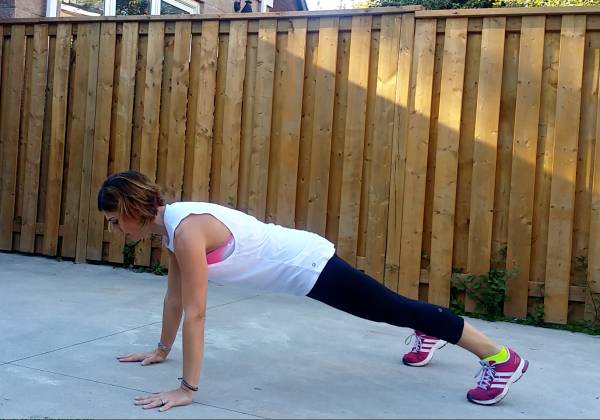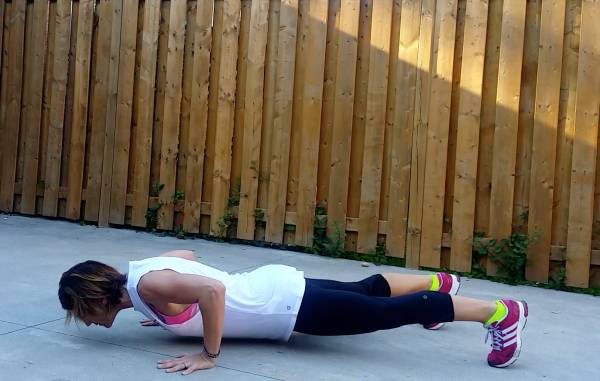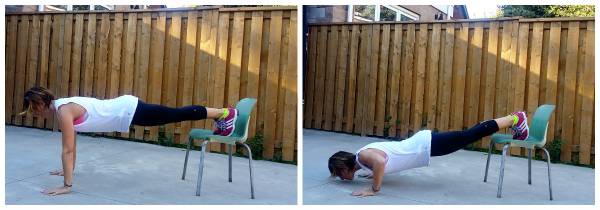Have you ever felt frustrated at not being able to do a decent push up? Some people just seem to pop those reps out with complete ease, yet for the majority of people a great push up alludes them. What most people seem to forget is that the push up is a fairly advanced exercise, and can be taught in a sequence of steps to build up muscle memory, ability, and strength.
In fact, the push up is one of the exercises I consistently teach to my “over 40 women” who genuinely have fears and doubts over their athletic ability. This fear is something that inherently comes with aging and the complexities that are associated with it. But is also something that can be turned around. By moving through a strategic methodology, I know that I can teach anybody to do a full push up. The knock-on effect, which is something I think we should focus on especially with women, is that the client achieves a sense of empowerment and feeling strong manifests itself into their everyday life.
If you have ever struggled with your push ups, then follow along to these steps and jump in at the step best suited to your level. Soon you will be popping out reps like the bros in the gym
Related: The Best Chest Workouts for Muscle Mass, Strength, and More.
Push Up Progressions for Everyone
First, let’s determine exactly what defines a push up. I like to describe it to my clients as a moving plank. Throughout the movement of the push up you want to make sure that everything from your ankles to your shoulders remains in a straight line while maintaining tension, so my starting point for all push ups is a straight arm plank.
1. Straight Arm Plank

Coaching Cues:
- Ankles to shoulders are in a straight line.
- Avoid lifting your bum in the air.
- Squeeze those glutes like you are cracking a nut between the cheeks.
- Make sure your hands are actively pushing into the floor, almost gripping the floor with your fingers.
- Push away actively from the floor with your toes and hands to create a feeling of lift.
- Maintain tension throughout the body, yet keep your face relaxed.
Frequency:
If you are new to the plank, build up your holding time slowly. Working in 15 sec increments, gradually increase your time in the straight arm plank so that you can comfortably hold for 1 minute. When you can, then you are ready to move onto the next stage.
2. Arm Elevated Push Ups

I never teach push ups on the knees. I find that moving the plane of the body from a kneeling position to a full push up position is just too great a leap for most people to make. Instead, start on a raised angle, and learn to take the weight of the push up through your arms. This method will garner a more successful progression. I have used weight benches, barbells on the rack, park benches, chairs, kitchen surfaces, and garden walls, amongst other things. Find a height that works well for your ability.
Coaching Cues:
- Use all coaching cues for straight arm plank.
- Visually imagine taking your chest between your hands rather than taking your head between your hands.
- Arm width should be under or slightly wider than shoulder width. I don’t mind people starting with a wider width if it means achieving success, but gradually move the width in closer before moving onto the next stage.
- As you lower, bend your elbows back and slightly in towards your ribs.
- Continue to squeeze your glutes like you are cracking a nut between the cheeks.
- Do not lead the movement with your chin, and keep your neck alignment as natural as possible.
Number of Reps:
When you can perform 10-12 arm elevated push ups, start to lower the angle so that you challenge the amount of load you are pushing.
- High angle = easier push up
- Lower angle = harder push up
3. Full Push Ups

Chances are that if you were a beginner at the start of this programming, there will need to be quite a bit of practicing the previous variations before you get here. Don’t rush the process. Feel confident and strong in the arm elevated push ups before moving to the full push up.
Coaching Cues:
- Use the straight arm plank plus the arm elevated push up cues, which should be second nature to you by now.
- When lowering, keep your chest moving between your hands and gaze straight down at the floor.
- A cue that I use for my clients is “squeeze under your armpits” to initiate the movement back up. This will help you engage your lats to initiate the movement.
- If your shoulders start hunching then you will put stress on your traps, so keep space between your ears and your shoulder blades.
- Taking the feet wider for the first few reps will help to keep you stable.
Number of Reps:
- Start small. Why not try doing 1 or 2 push ups throughout the day.
- While making a cup of tea in the kitchen, do a push up.
- While putting the kids to bed, do a push up.
- Between sets, do a push up.
- After sex, do a push up. (Well maybe not, but you get the idea.)
4. Feet Elevated Push Up (Advanced)
When you can consistently perform 10-12 push-ups with good form, then you can start adding variations into the mix of which there are many. Below are photos of my favorite advanced version. Simply elevate your feet and follow the push up cues.

Put It to Practice
So now you have a strategic method for nailing your first push up:
- Straight Arm Plank
- Arm Elevated Push Up
- Full Push Up
- Advanced Variations
Hopefully now trying your first push up, or advancing your current push ups, won’t feel quite so daunting. Good luck with these steps, and please comment below if you have any questions that will help you progress in your push up program.






